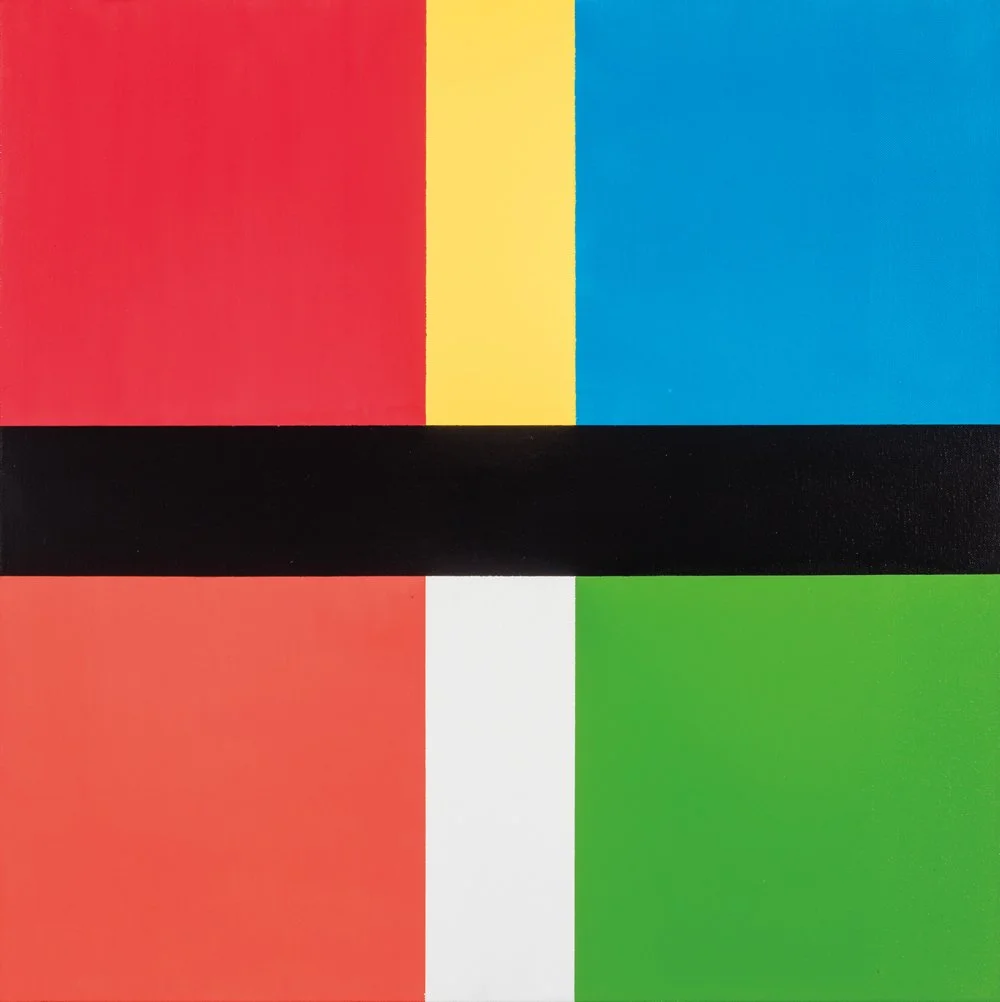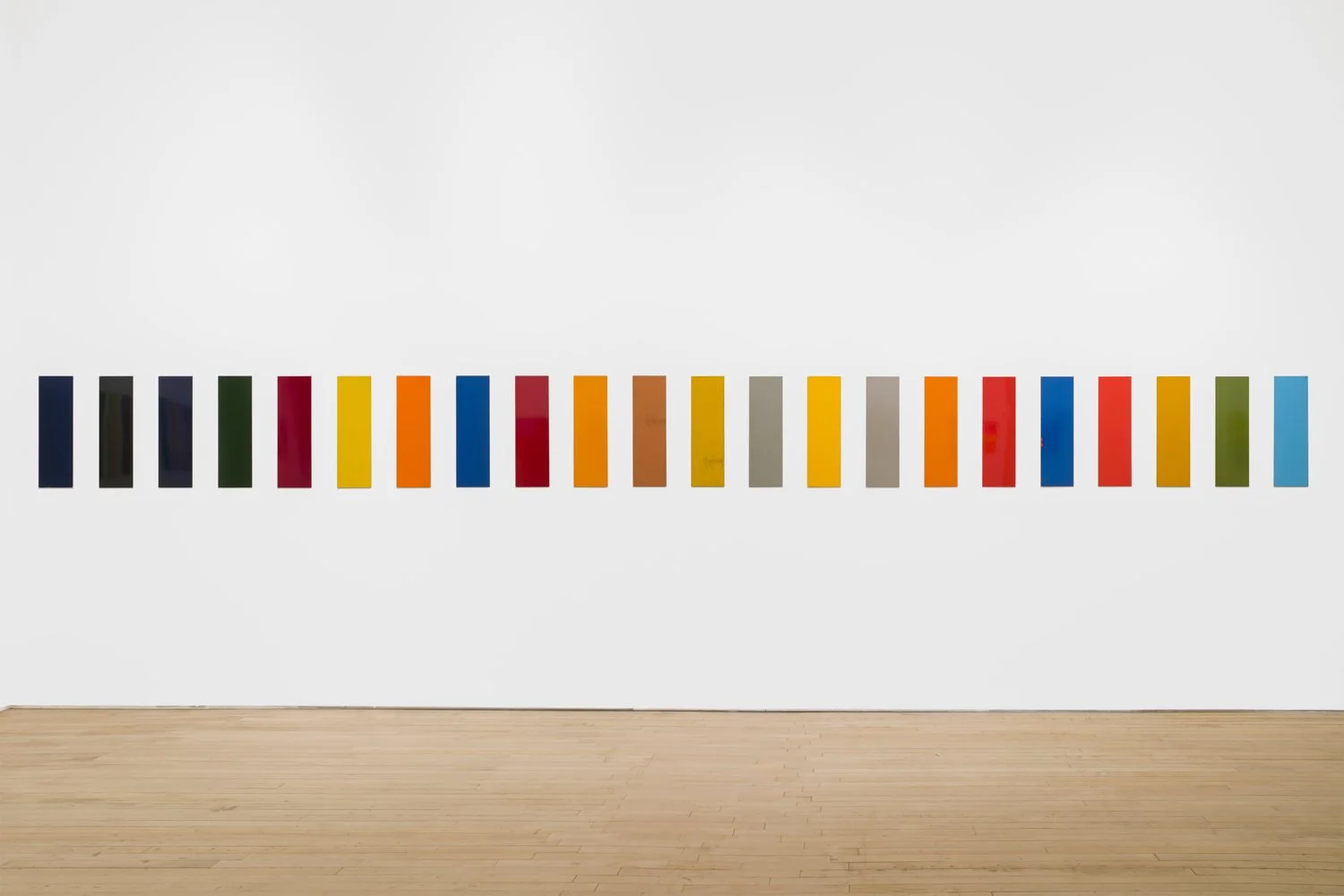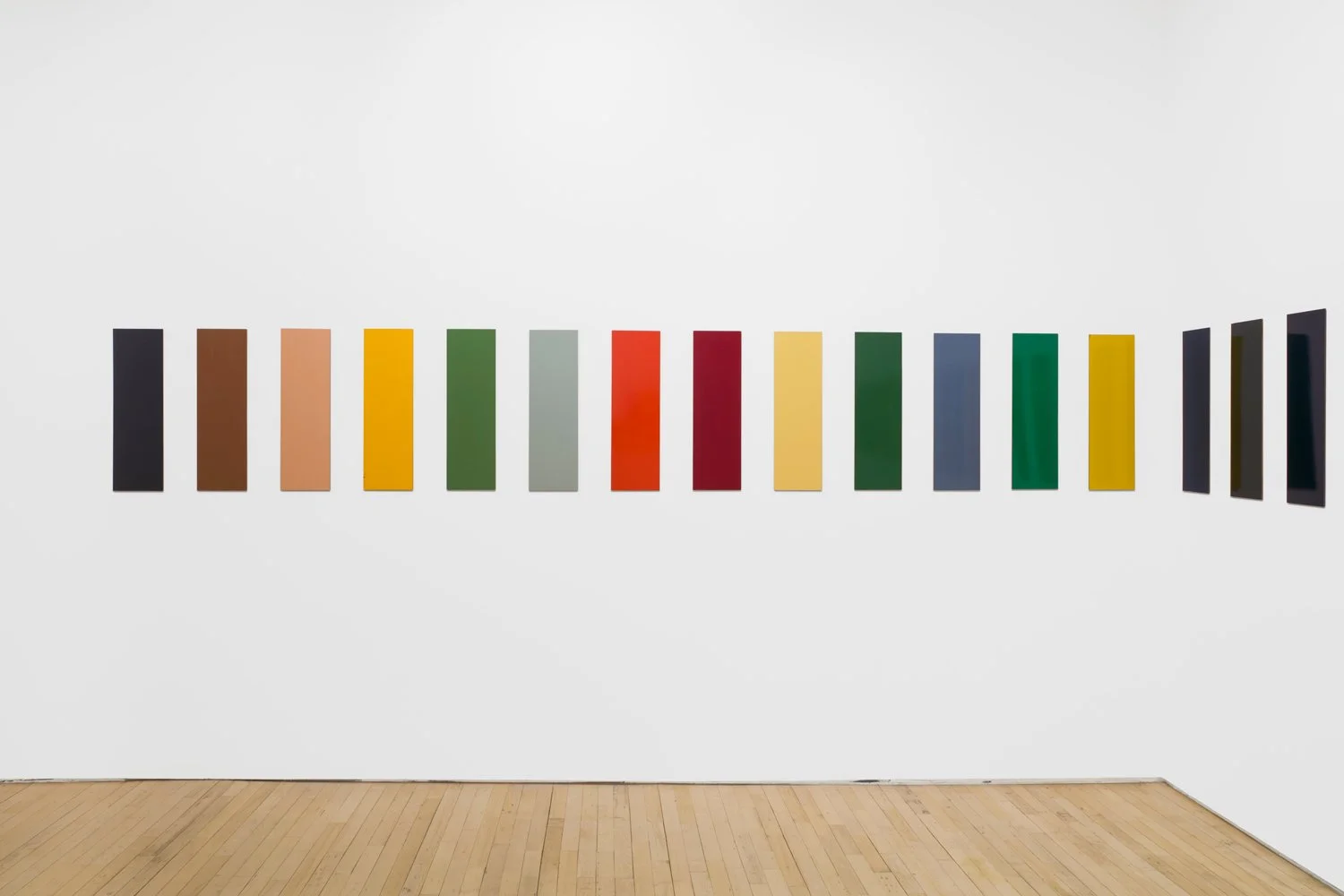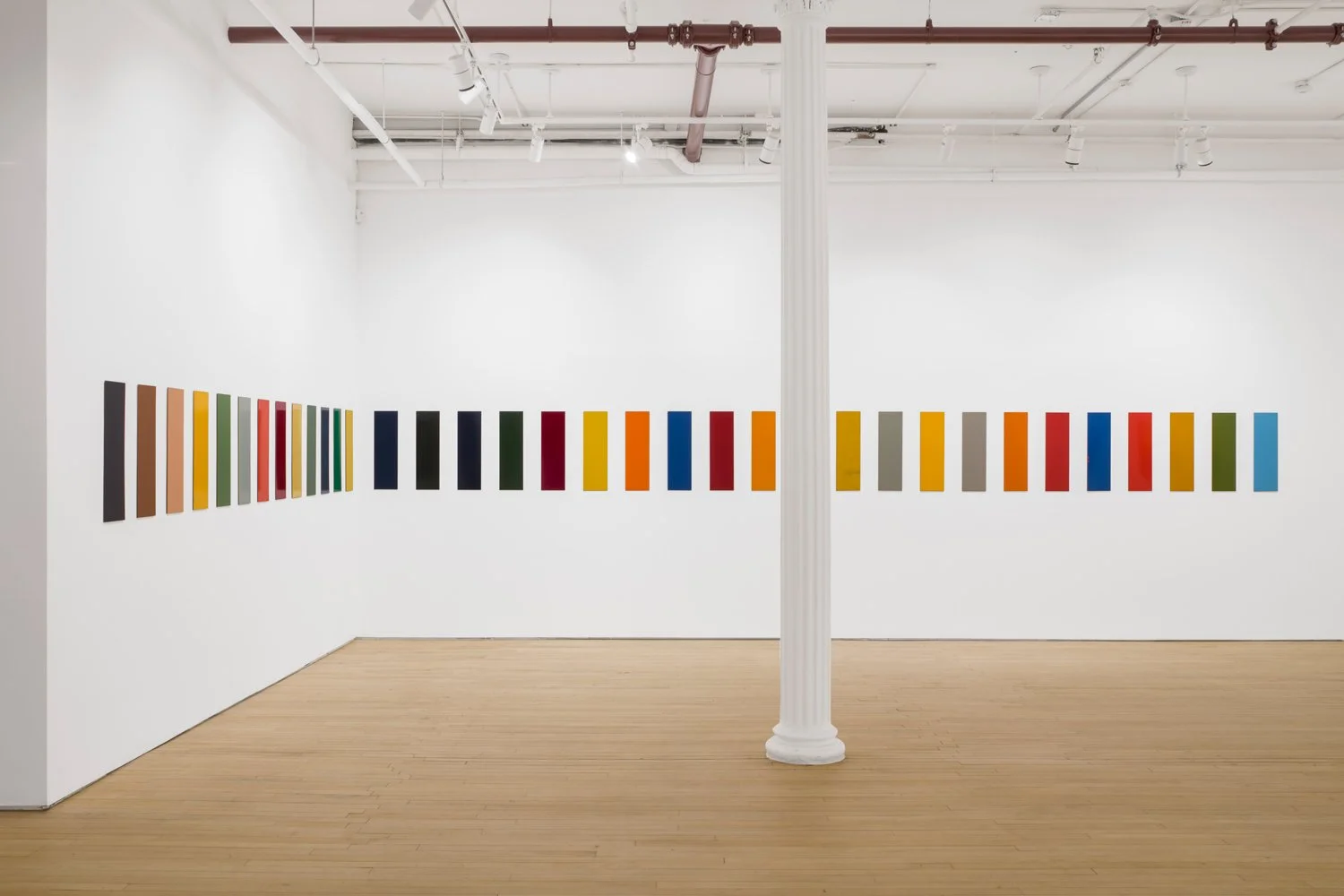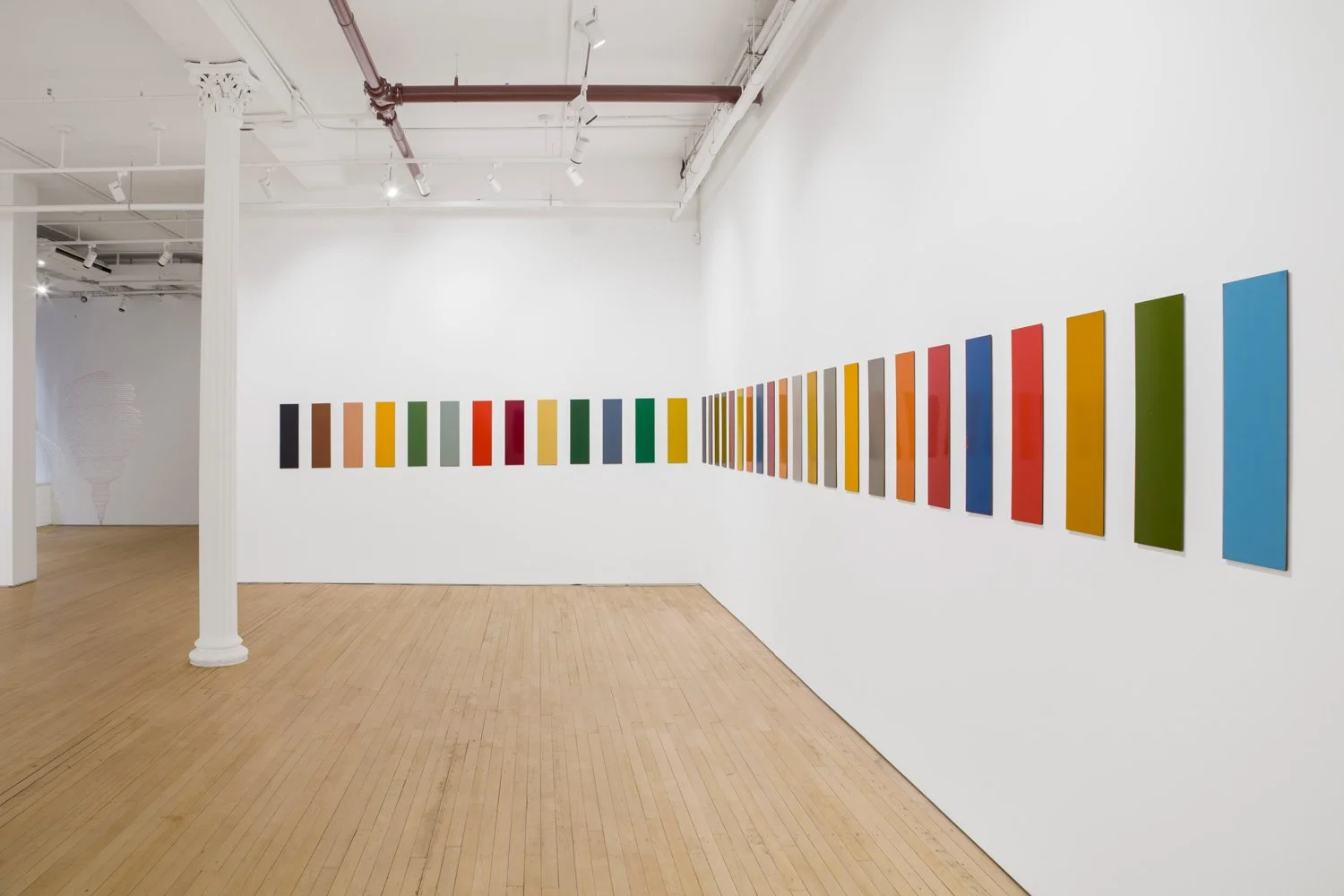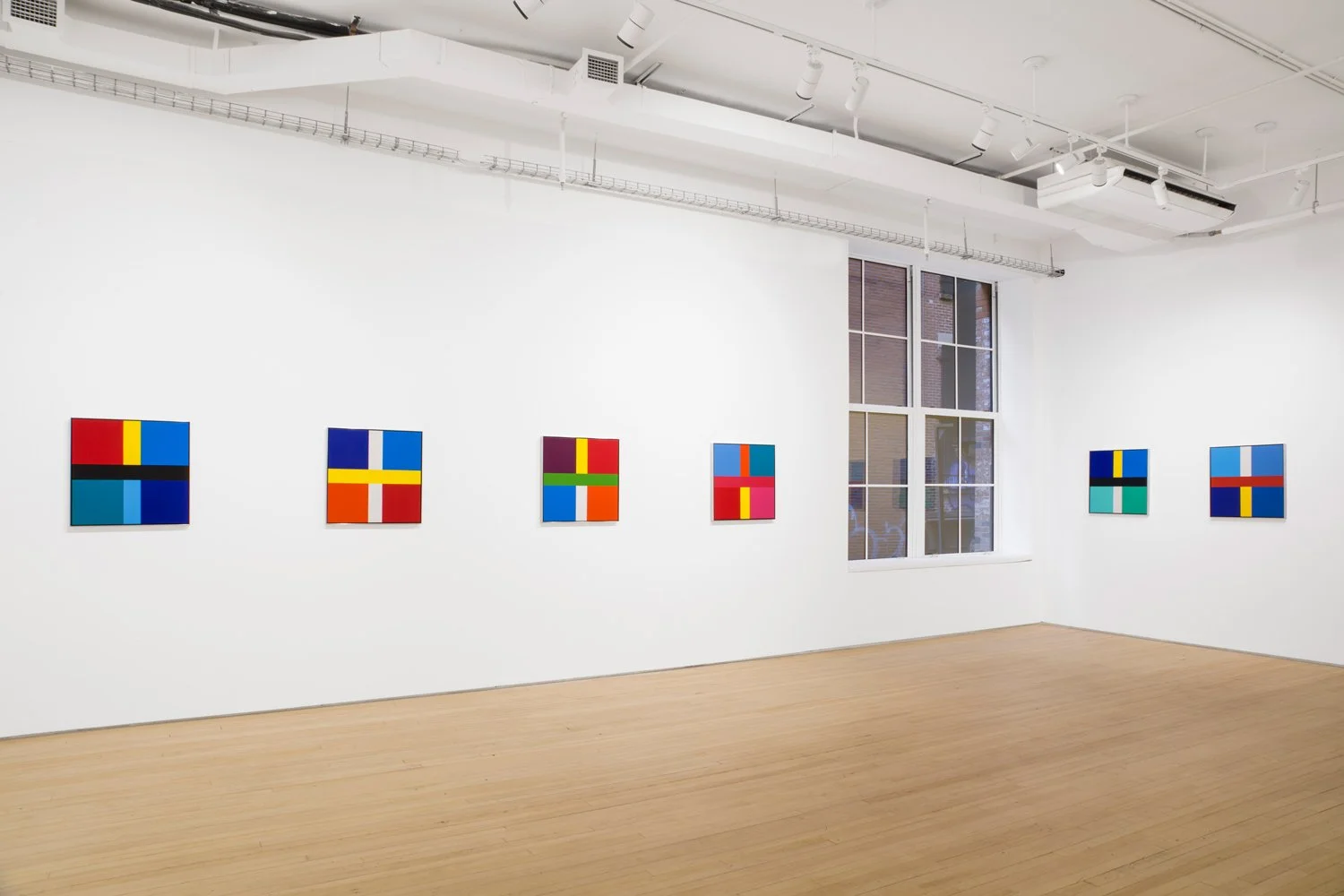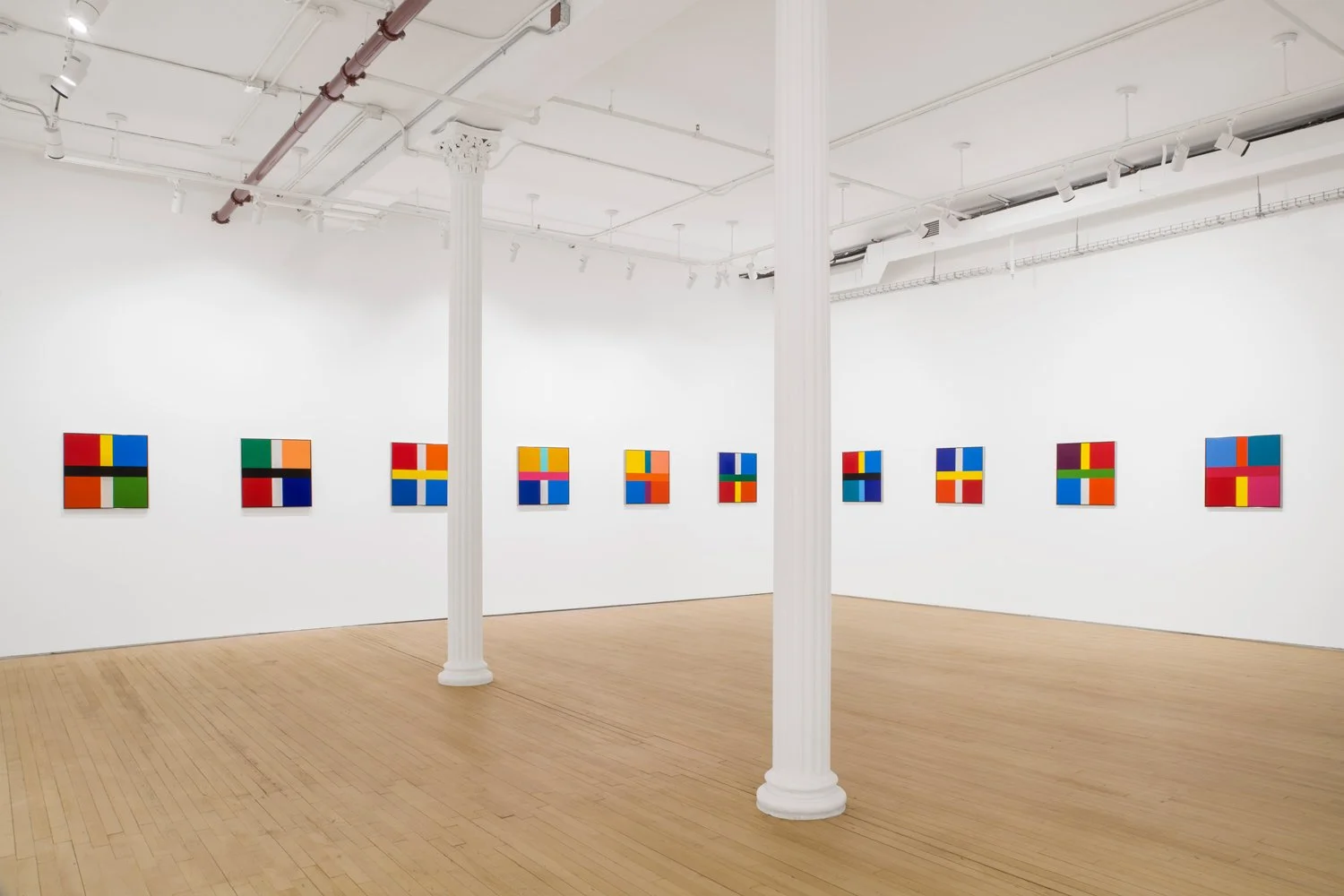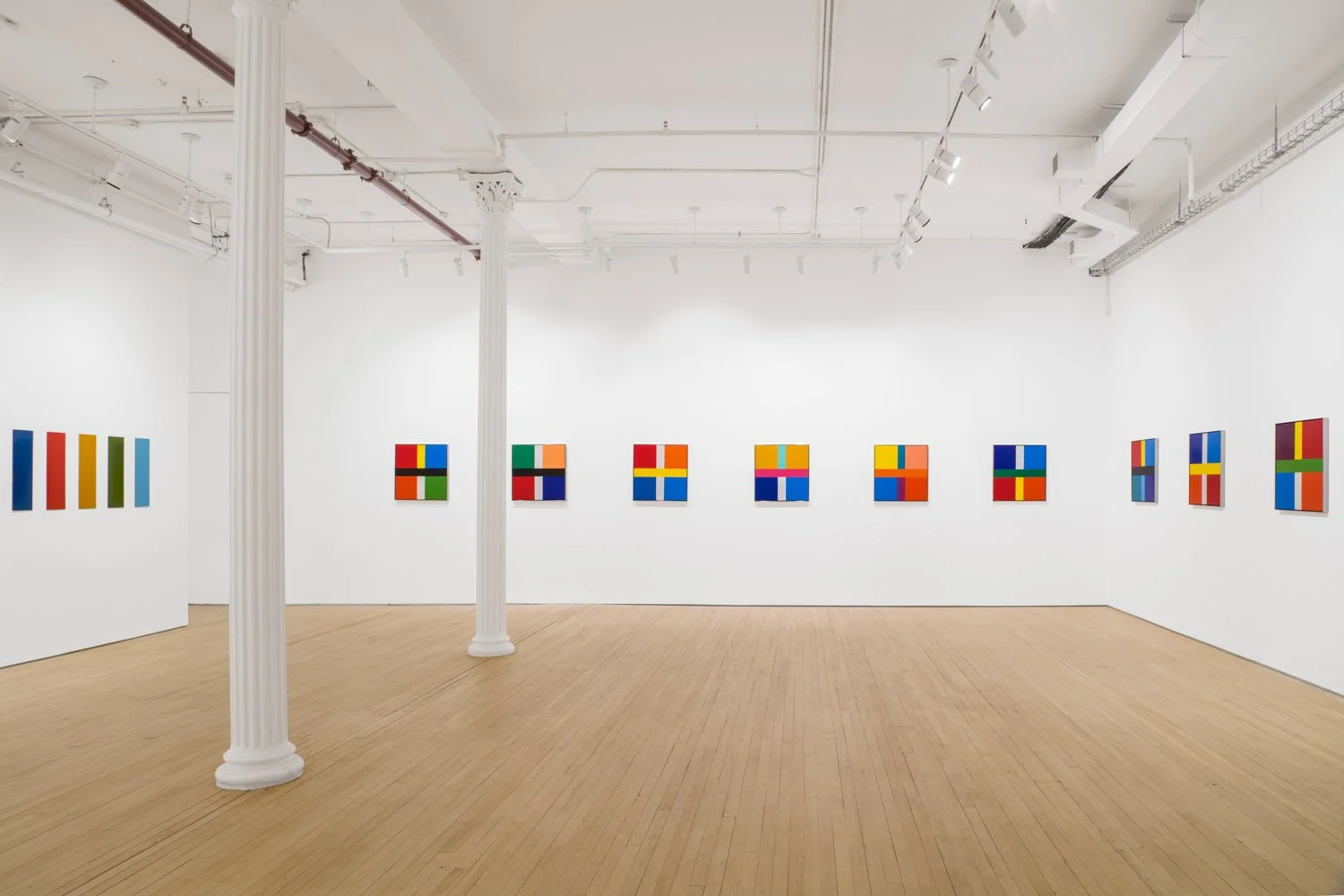Jaan Poldaas
Jan 10 - Mar 8, 2025
Arsenal Contemporary Art New York is pleased to present work by Jaan Poldaas.
The late Jaan Poldaas (1948-2018) was a paradigmatic figure in the field of conceptual art. Known for his precision and rigor, color has been the hallmark of his unique practice from early on. Bookending his career, the exhibition will present the last edition of his pivotal early serial painting E.G., of 1978, as well as all twelve paintings in the artist’s final 1800 series of 2018.
Unusual for a conceptual artist, Poldaas was a painter. He is known for his keen early interest in the semiotics of color, as well as for his exploration of the frontiers of artistic autonomy by sharing authorship with abstruse mathematical formulas, and especially with chance. Early in his career, Poldaas produced a chromatic portrait of Toronto with E.G.,1978, by exploring the narrative potential of the colors he encountered in the urban environment. He carefully noted the palette of corporate identification that he saw while walking through the city — the brand colors of utilities, newspapers, banks, chain stores, mailboxes, as well as other found colors. Later, he would experiment with the opposite, or the elimination of chromatic signification. Finally, in his stirring last series, he explored the creation of chromatic ‘personalities’ through dynamic juxtapositions.
Mystery surrounds the final 1800 works, exacerbated by the fact that the series represents a departure for the artist. Each picture is structurally identical with four squares separated by a broad horizontal bar crossing a vertical one, creating the illusion of depth through superimposition with the horizontal bar on top of the vertical. The spatial play of composition in the last works was not a typical feature of Poldaas’ earlier work, which emphasized the flatness of the picture plane and the push/pull of various color tonalities. Color is treated differently in the horizontal bars—black, red, dark green, light green, fuchsia or yellow—than in the verticals, which the artist has limited mostly to white, never black, but occasionally yellow, red, or in single cases, dark green, purple and aqua. The composition alternates between forming a two-tone cross or separating the vertical bar into two rectangles by giving each divided section a separate color.
This emphatic horizontal and vertical organization of the paintings underscores the binary orientation of the four resulting squares, indeed of any square. Moreover, the works bear similarities to flags, some of them identifiable, although the colors were composed by chance. We know that Poldaas used dice and playing cards to determine the arrangement of the colors in each painting, but information about the palette for these works did not survive him. The resulting riddle does not diminish the fascination of the last series; on the contrary. At once a summation of his corpus and a radical departure, Poldaas’ last works toy with spatial illusion using both color and composition, albeit within strict parameters, which is consistent with his life-long practice. The unexpected complexity, playfulness, and wit of these bold, last works, compounded by their mystery, leave us with the impression of an intellectually adventurous artist who died in mid-sentence.
Jaan Poldaas (1948-2018) was born in Sweden to Estonian refugees. He came to Canada as an infant and grew up in Northern Ontario. Initially trained as an architect at the University of Toronto, Poldaas began painting in 1971 in the geometric abstract style for which he is known, but from a consistently experimental and conceptual perspective. He was a founding member of Mercer Union, a storied artist-run space in Toronto that is still in operation. Work by Jaan Poldaas can be found in major Canadian museum collections, such as the Art Gallery of Ontario and the National Gallery of Canada.

